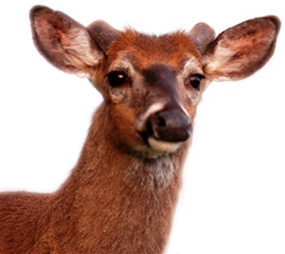 |
| Robert Crootof photo | | Open areas such as Cades Cove and Cataloochee are excellent spots to look for wildlife such as white-tailed deer. |
 |
Most visitors understand that feeding wildlife is against the law, but many people do not realize that disturbing park wildlife is also a violation of federal regulations and can result in fines and arrest.
The laws protecting park wildlife are contained in the Code of Federal Regulations. It states that “Willfully approaching within 50 yards (150 feet), or any distance that disturbs or displaces bear or elk is prohibited." In addition, feeding, touching, teasing, frightening, or intentionally disturbing wildlife is prohibited.
As a rule of thumb, if you approach an animal so closely that it changes its behavior, you have approached too closely. Instead use binoculars, spotting scopes and cameras with telephoto lenses to enjoy wildlife. Watch for any modification in an animal's behavior that indicates that you have approached too closely. Move away from the animal until you reach a distance at which the animal feels comfortable once again and resumes whatever activity it was engaged in before you approached.
Never feed wildlife or bait animals for closer observation or photography. Feeding park wildlife usually guarantees its demise.
Viewing Tips
Viewing wildlife in the Smokies can be challenging because most of the park is covered by dense forest. Open areas like Cataloochee and Cades Cove offer some of the best opportunities to see white-tailed deer, black bear, raccoon, turkeys, woodchucks, and other animals. The narrow, winding road of Roaring Fork Motor Nature Trail encourages motorists to travel at a leisurely pace and sometimes yields sightings of bear and other wildlife. During winter wildlife is more visible because deciduous trees have lost their leaves.
Because many animals are most active at night, it can be advantageous to look for wildlife during morning and evening. It's also a good idea to carry binoculars. Some people like to sit quietly beside a trail to see what wildlife will come out of hiding. And don't forget to scan the trees—many animals spend their days among the branches.
Please read the important safety information at What Do I Do If I See A Bear?
| 





